Abstract
Purpose
In the present study, a case of posterior surface opacification of a silicone intraocular lens (IOL) in a patient with asteroid hyalosis (AH) is reported.
Case summary
A 76-year-old male was referred to our clinic with IOL opacification in his left eye. The patient had uneventful cataract surgery 7 years prior with the same silicone IOL implanted in both eyes. Three years after surgery, posterior capsular opacity was observed in his left eye and neodymium:YAG (Nd:YAG) laser capulotomy was performed. After posterior capsulotomy, opacification of the IOL's posterior surface was observed on slit lamp examination. IOL exchange was performed and the explanted IOL was analyzed using a light microscope and a scanning electron microscope with energy dispersive X-ray spectroscopy for elemental analysis of the deposits. The calcification was on the posterior surface of the IOL and composed mainly of calcium and phosphorus, the main components of AH. The right eye showed clear IOL with intact posterior lens capsule.
Go to : 
References
1. Lee JY, Joo KM, Kim SH. Late opacification of hydrophilic acrylic intraocular lenses. J Korean Ophthalmol Soc. 2002; 43:2419–29.
2. Kim HG, Lee SH, Choi YJ. Late postoperative opacification of the foldable hydrophilic acrylic intraocular lens, ACRL-160. J Korean Ophthalmol Soc. 2003; 44:315–20.
3. Kim JC, Kim CS, Choi SH, et al. Clinical characteristics of patients with opacification of hydrophilic acrylic intraocular lens after abdominal surgery. J Korean Ophthalmol Soc. 2005; 46:1281–90.
4. Kim SH, Choi SH. Determine a proper axial length by ultrasonic biometry in opaque hydrophilic acrylic intraocular lens. J Korean Ophthalmol Soc. 2008; 49:1453–60.

5. Lee SJ, Choi JH, Sun HJ, et al. Surface calcification of hydrophilic acrylic intraocular lens related to inflammatory membrane abdominal after combined vitrectomy and cataract surgery. J Cataract Refract Surg. 2010; 36:676–81.
6. Moon K, Kim KS, Kim YC. A case of hydrophilic acrylic abdominal lens opacification in a patient with proliferative diabetic retinopathy. J Korean Ophthalmol Soc. 2012; 53:1172–6.
7. Mitchell P, Wang MY, Wang JJ. Asteroid hyalosis in an older abdominal: The Blue Mountains Eye Study. Ophthalmic Epidemiol. 2003; 10:331–5.
8. Winkler J, Lünsdorf H. Ultrastructure and composition of asteroid bodies. Invest Ophthalmol Vis Sci. 2001; 42:902–7.
9. Foot L, Werner L, Gills JP, et al. Surface calcification of silicone plate intraocular lenses in patients with asteroid hyalosis. Am J Ophthalmol. 2004; 137:979–87.
10. Wackernagel W, Ettinger K, Weitgasser U, et al. Opacification of a silicone intraocular lens caused by calcium deposits on the optic. J Cataract Refract Surg. 2004; 30:517–20.

11. Werner L, Kollarits CR, Mamalis N, Olson RJ. Surface calcification of a 3-piece silicone intraocular lens in a patient with asteroid hyalosis: a clinicopathologic case report. Ophthalmology. 2005; 112:447–52.
12. Stringham J, Werner L, Monson B, et al. Calcification of different designs of silicone intraocular lenses in eyes with asteroid hyalosis. Ophthalmology. 2010; 117:1486–92.

13. Matsumura K, Takano M, Shimizu K, Nemoto N. Silicone abdominal lens surface calcification in a patient with asteroid hyalosis. Jpn J Ophthalmol. 2012; 56:319–23.
Go to : 
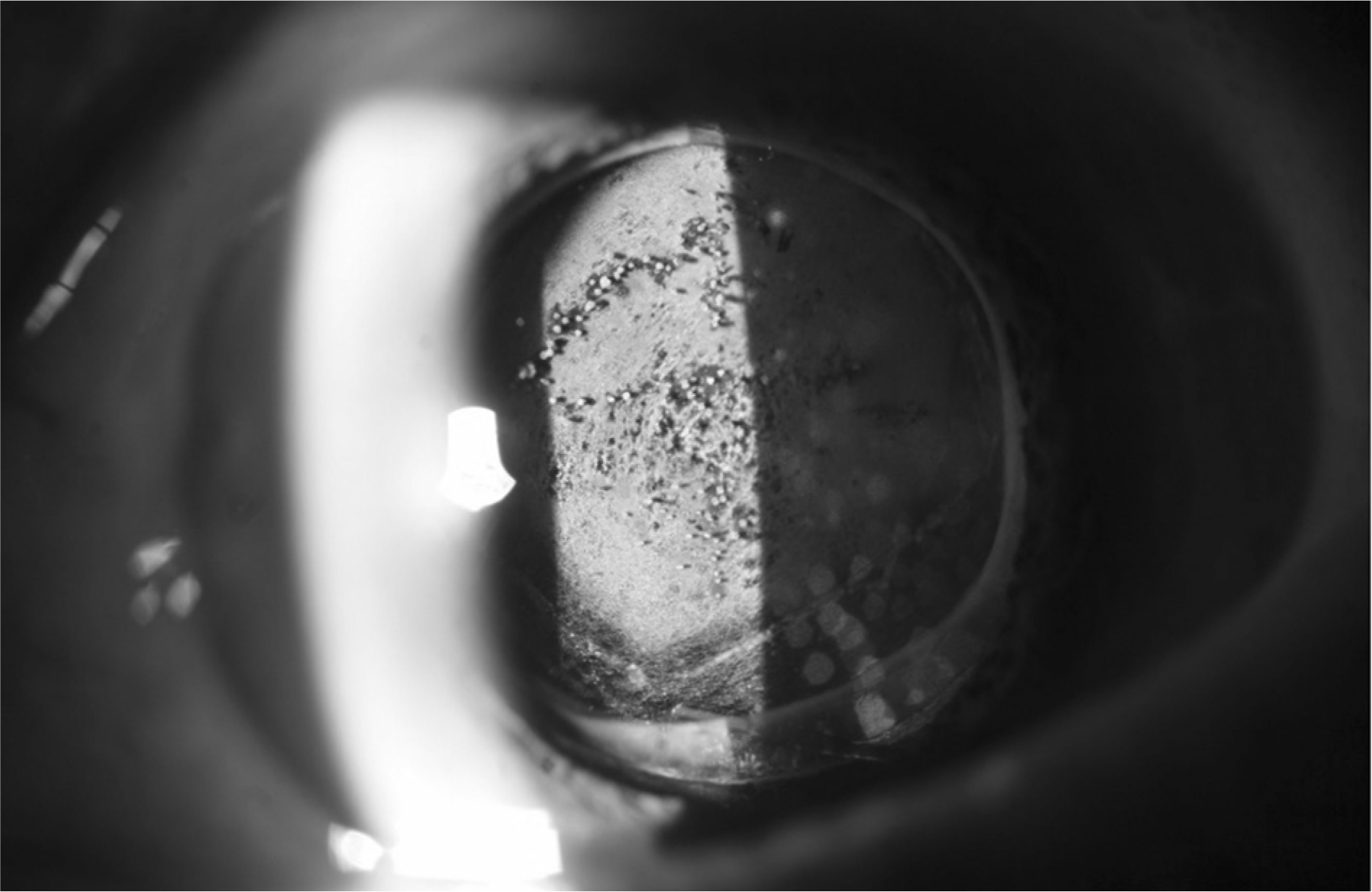 | Figure 1.Anterior segment photograph of the left eye. Opacification of the intraocular lens is seen within the neo-dymium:YAG posterior capsulotomy margin. |
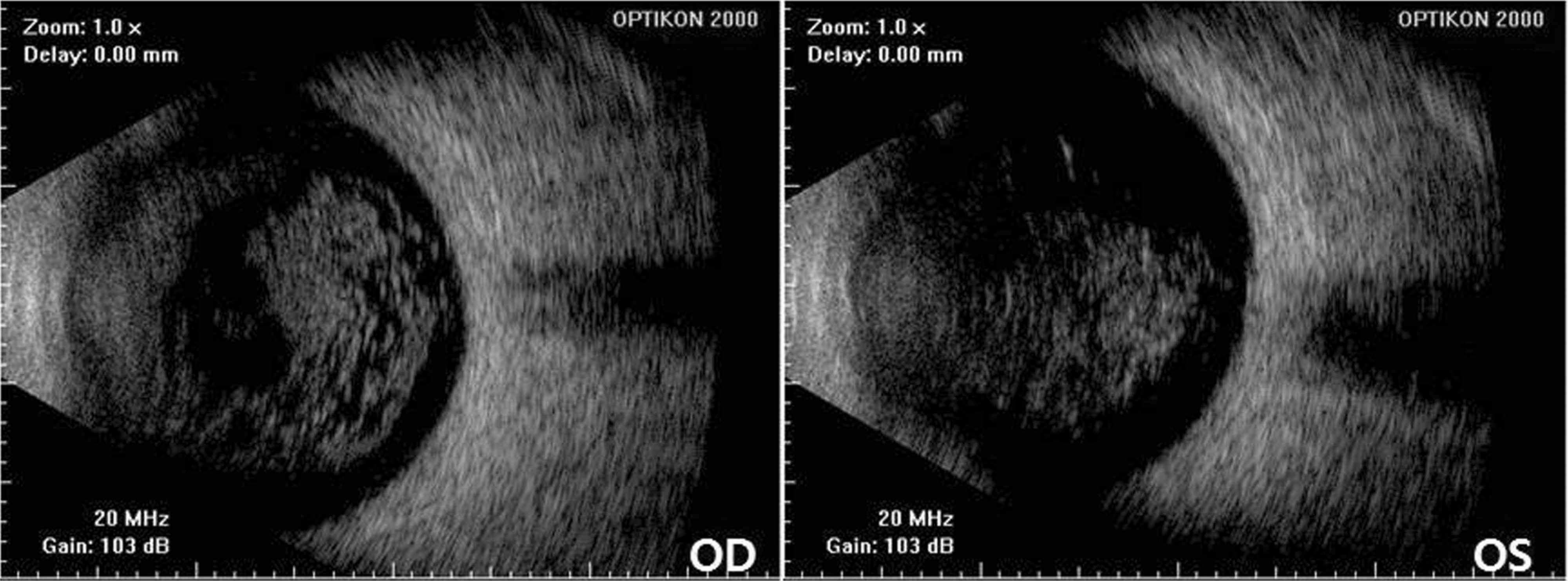 | Figure 2.B scan image of the right (OD) and left (OS) eye. B scan shows vitreous opacity in both eyes which are asteroid bodies. |
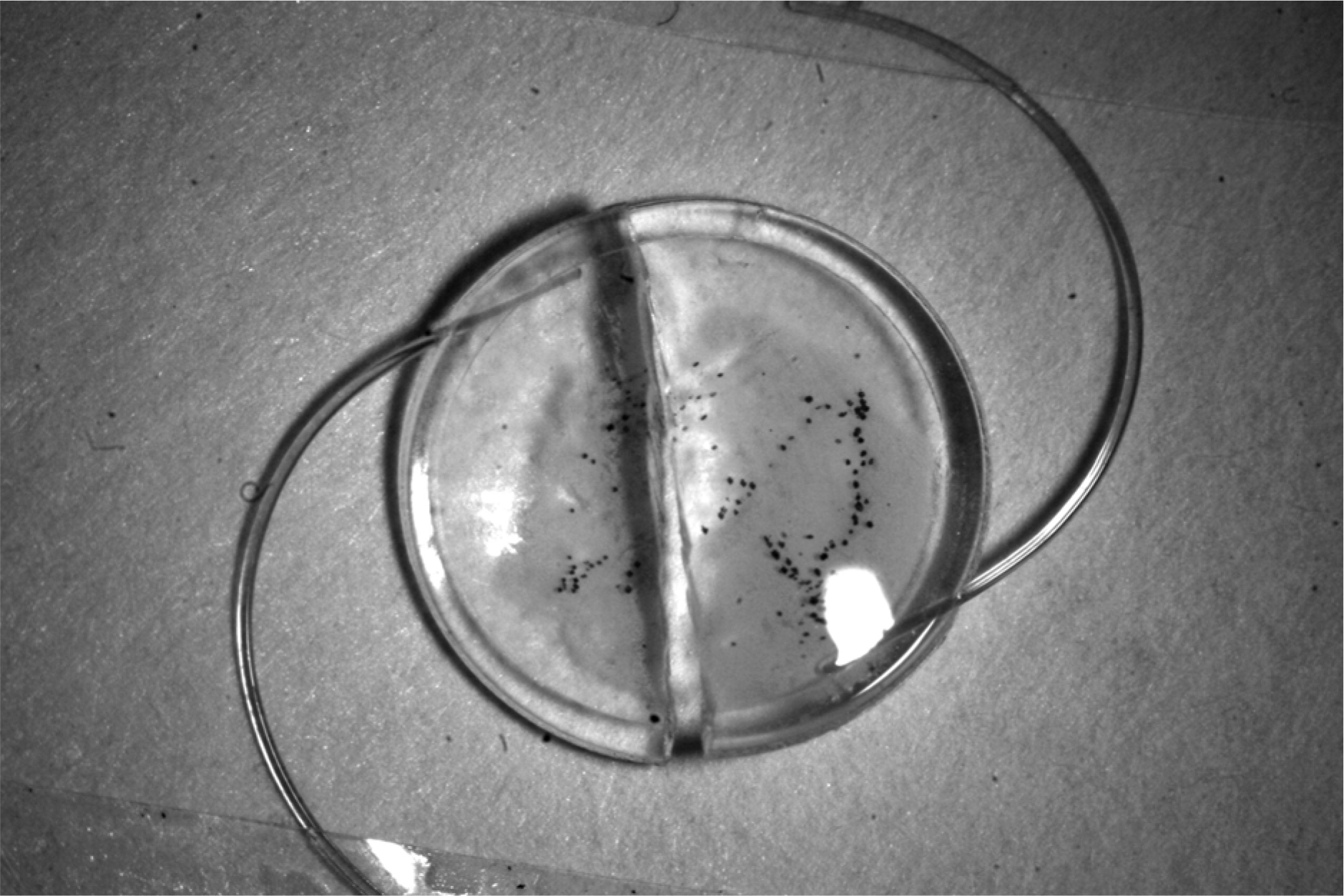 | Figure 3.Gross photograph of the explanted AMO ClariFlex® lens. It shows calcifications on the central optic zone where neodymium:YAG posterior capsulotomy was performed. |
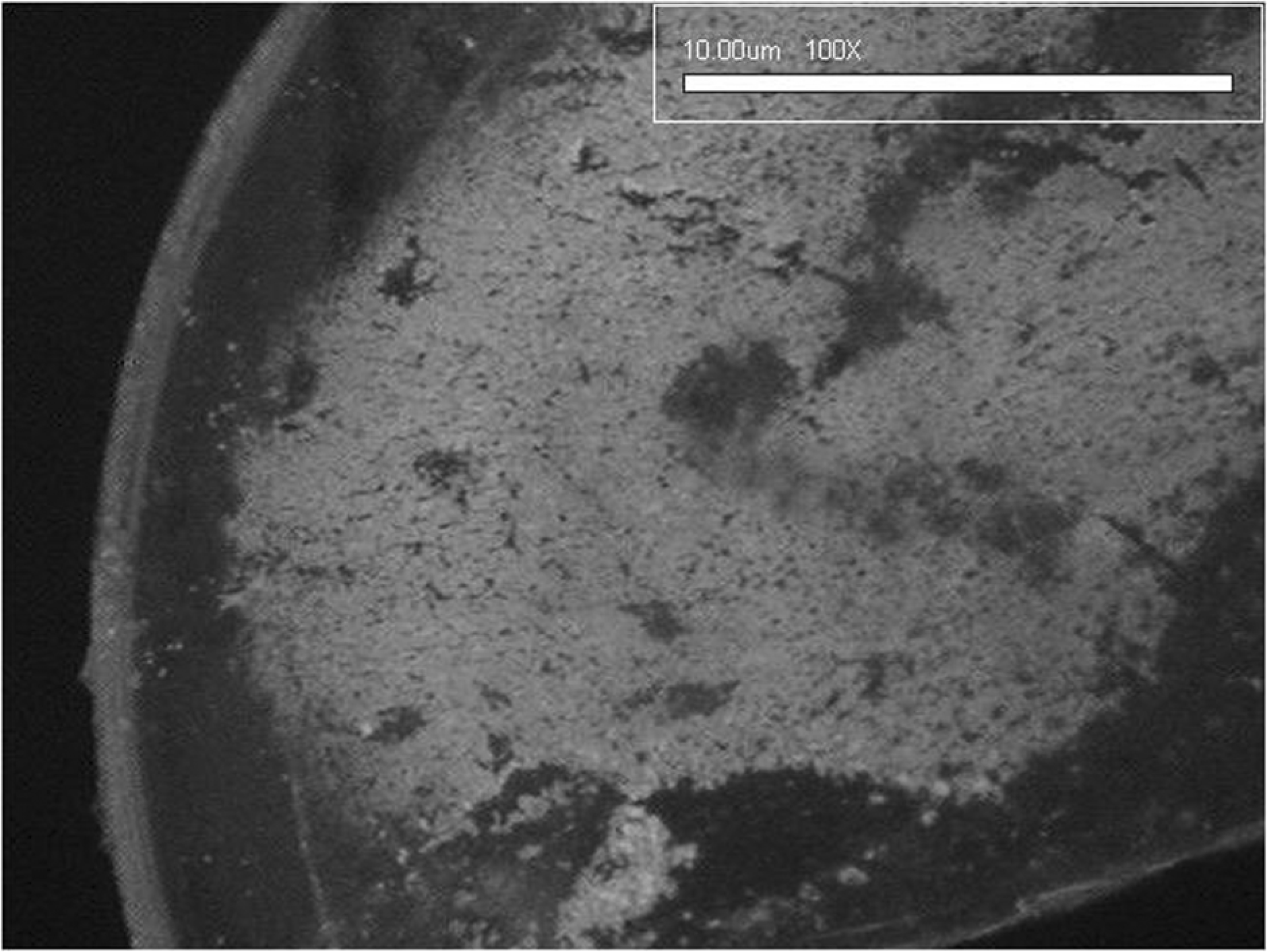 | Figure 4.Light photomicrograph of the posterior aspect of the explanted intraocular lens. It shows deposits on the posterior surface, showing thick crustlike appearance with cracks in between the deposits (original magnification, ×100). |




 PDF
PDF ePub
ePub Citation
Citation Print
Print



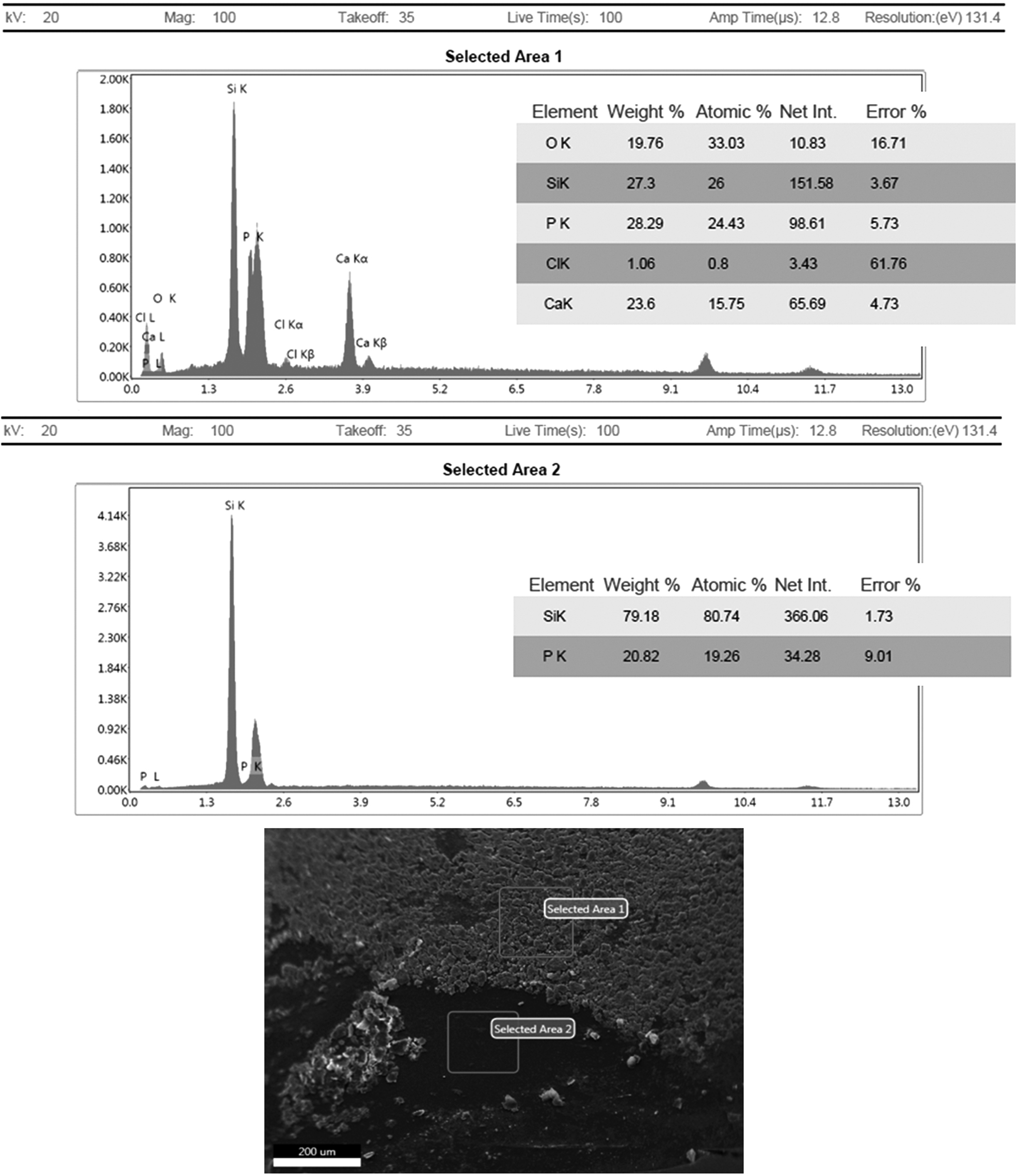
 XML Download
XML Download